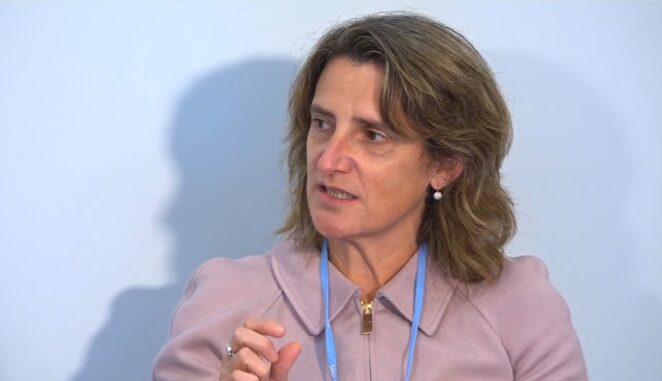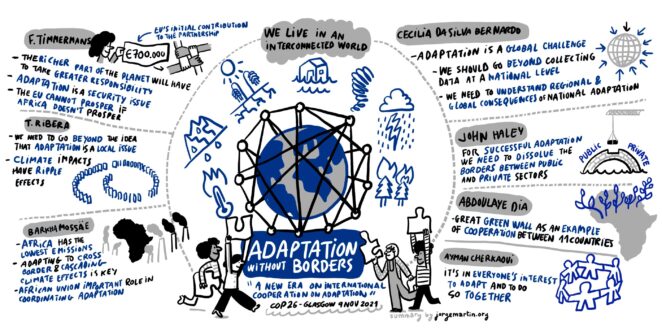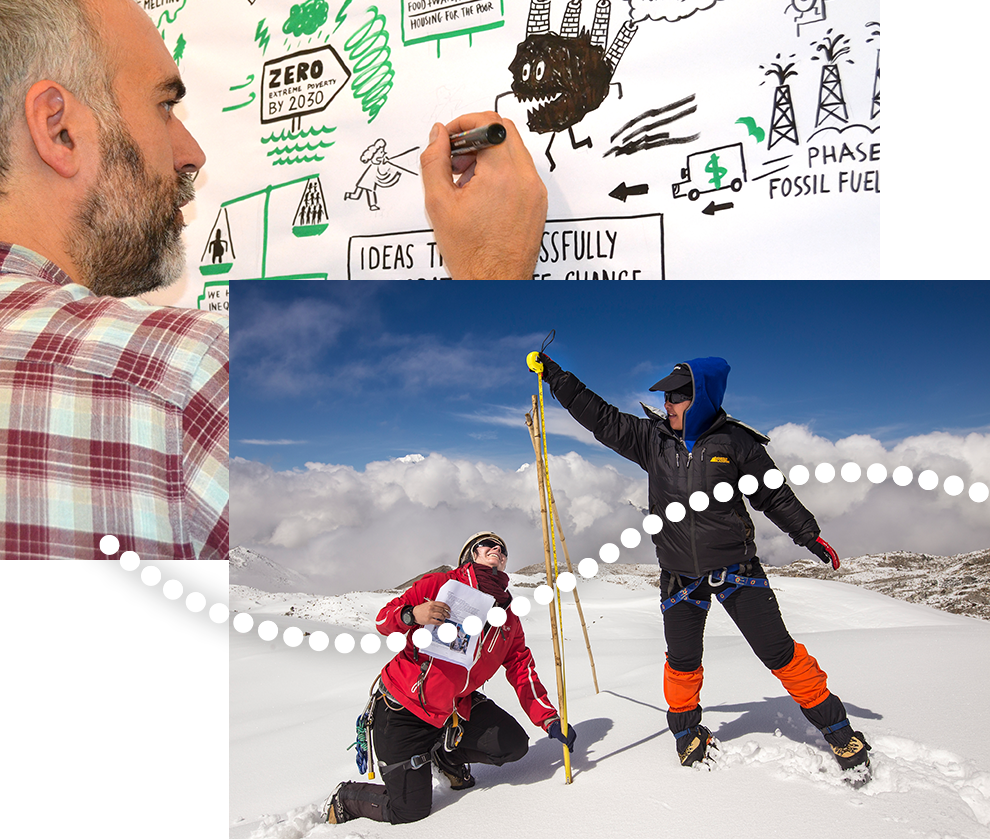Adaptation Without Borders launches collaboration with DG CLIMA to scale up international action on cross-border climate risks

Summary
This press release is reposted from the Stockholm Environment Institute (SEI) website. A strategic collaboration between Adaptation Without Borders and DG CLIMA launched on 9 November 2021 at COP26 will work to strengthen international cooperation on adaptation to better manage the cross-border and cascading impacts of climate change.
The EU is investing €700 000 in the partnership, which will run through 2022 and puts into practice the vision of the EU Strategy on Adaptation to Climate Change, which stresses that in a deeply interconnected world, building resilience internationally is “not only a matter of solidarity, but also of open strategic autonomy and self-interest” for the European Union and its member states.
At the official launch event, held in the EU Pavilion at COP26, Frans Timmermans, the European Commission’s Executive Vice President for the European Green Deal, said the EU has become the top provider of public finance for adaptation because “we understand the urgency of the matter.”
Given that climate change impacts “can create knock-on effects that cross countries and continents,” he added, supporting adaptation in developing countries, especially in Africa – “our sister continent” – is not just “the right thing to do”, but also important for Europe’s security and prosperity.
“Europe cannot prosper without Africa prospering, and Europe prospering can help Africa prosper…If we do not solve our common challenges together, they will not get solved,” he said.
‘A step change in ambition and action’
Adaptation Without Borders partners will work with the EU and its partners, as well as other international actors in the wider world, and multilateral processes such as the United Nations Framework Convention on Climate Change (UNFCCC), to: equip them with new knowledge of the threats posed by cross-border climate risks to societies, economies and ecosystems; delve into the policy implications of cross-border climate risks and – through a series of dialogues – identify opportunities for collaboration to better govern such risks; and build the capacity of national and regional adaptation planners to better manage cascading risks and strengthen systemic resilience.
“Tackling this ‘next generation’ of climate risks, which stand poised to become a defining issue for climate diplomacy in the years ahead, requires a step change in ambition and action on adaptation and a much more collaborative approach to adaptation.” Katy Harris, SEI Senior Policy Expert and Director of Adaptation Without Borders
Insights from the pandemic
“We have gone through this very dramatic experience of understanding how small and interconnected the world is,” said Teresa Ribera, Spain’s Minister for Ecological Transition and Demographic Challenge, at the launch event. It is crucial to understand those connections, she added: both how climate impacts in one place may reverberate elsewhere and how one country’s adaptation measures may affect others.

Teresa Ribeira, Spain’s minister for the Ecological Transition. co-led ministerial consultations on the global goal on adaptation at COP26. Photo: Screenshot Youtube EU Climate Action
Spain’s National Adaptation Plan already includes a chapter on transboundary effects, Ribera noted, but many countries have yet to tackle those issues. For all countries, she said, cross-border and cascading climate risks are “something where international cooperation is particularly important.”
“We really welcome this initiative,” said Barkha Mossaë, representing the African Union Commission. “The Covid-19 pandemic has made it clear that the forces of globalization can pose a risk as well as an opportunity and it is becoming increasingly urgent to address this in the context of climate change, too. This is something that Africa has been saying for a long, long time.”
Mossaë highlighted promising regional cooperation initiatives within Africa, focused on drought resilience, combatting desertification – the Great Green Wall initiative – and joint advocacy for increased adaptation finance and technology transfer. The African Union-led draft Africa Climate Change Strategy 2020-2030, which is being finalized, provides a key opportunity to strengthen collaboration.
“Regional cooperation and greater international support will be needed, as well as enhanced capacities to identify cross-border risks and find tools to address them now and in the near future,” she said
Prof. Abdoulaye Dia, Executive Secretary of the Pan African Agency for the Great Green Wall, said that at their core, the project’s objectives are the same as those of Adaptation Without Borders: to foster cooperation to address shared risks, integrating actions at the local, national and regional levels.
The Great Green Wall takes a humanist approach, Dia noted, recognizing that “in Africa, people live off the natural capital,” so adaptation and ecosystems restoration are crucial to human well-being and development. These efforts will also advance climate mitigation, he added, with global benefits.

A visual interpretation of comments on the interconnectedness of climate risk, and what that means for climate adaptation. Graphic: Jorge Martin / Adaptation Without Borders
A new measure of global adaptation success
John Haley, CEO of the international insurance and risk management firm Willis Towers Watson, sounded an optimistic note at the launch event, pointing to multiple resilience-focused partnerships launched in Glasgow and at previous climate summits. Taking the theme of the discussion to the next level, he said:
Cecília da Silva Bernardo of Angola, Co-Chair of the UNFCCC Adaptation Committee, said adaptation was already recognized as a global challenge in the Paris Agreement, but it has taken time for that notion to be put into practice. A recent paper by the Adaptation Committee explicitly acknowledged transboundary climate risks and the special challenges they pose.“For successful adaptation, we need to dissolve the borders between the public, private and academic sectors as much as possible, and band together to protect our communities and our citizens.”
“Without taking these risks and impacts into account,” da Silva said, “we risk misunderstanding where we truly stand in our journey to achieving the Global Goal on Adaptation.” In assessing progress on adaptation, she added, “we need to go beyond collating efforts at the national level and take stock of how climate risk has been reduced or increased in global systems.”
Ayman Cherkaoui, Senior Manager of the Mohammed VI Foundation for Environmental Protection in Morocco and an Adaptation Without Borders Ambassador, echoed that perspective. It is clear that current approaches to adaptation “fall far short of what is needed to effectively manage climate risks in an interconnected world,” he said. That is why this partnership is so important.
“There is an urgent need and a clear opportunity for multilateral cooperation around climate change,” Cherkaoui said. By working together, “everyone can benefit from the kinds of systemic resilience that adaptation could build.”

Comments
There is no contentYou must be logged in to reply.